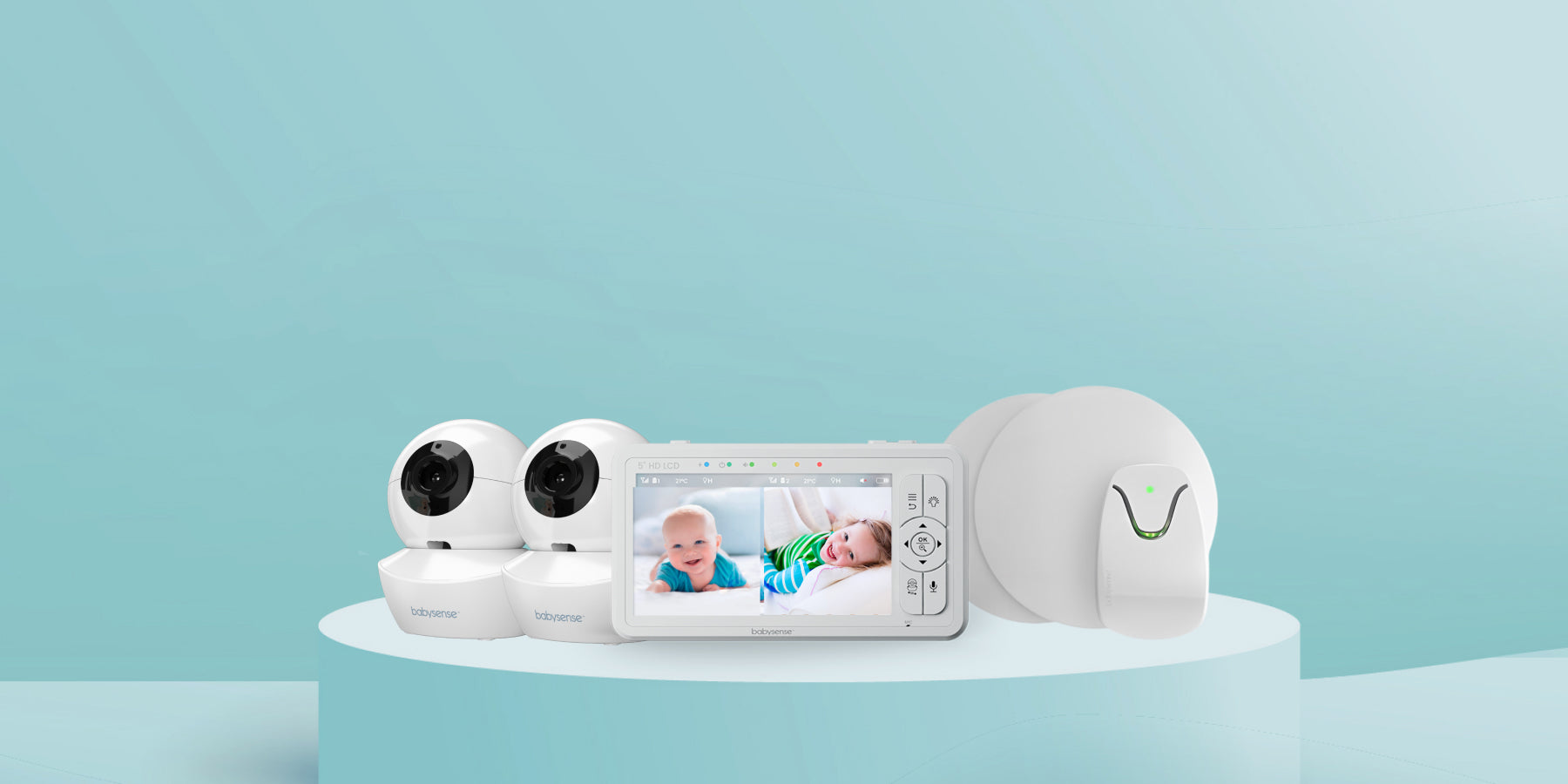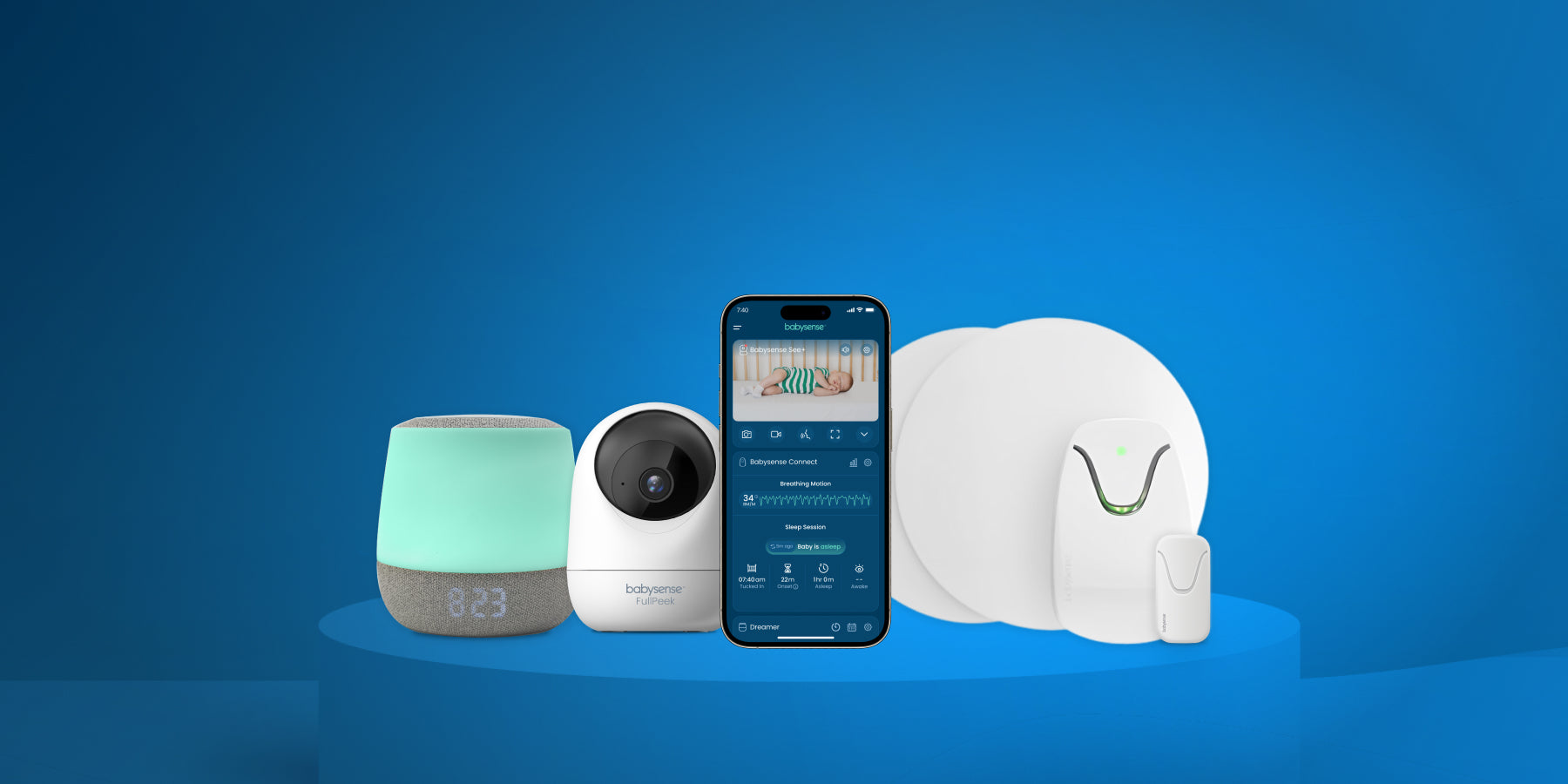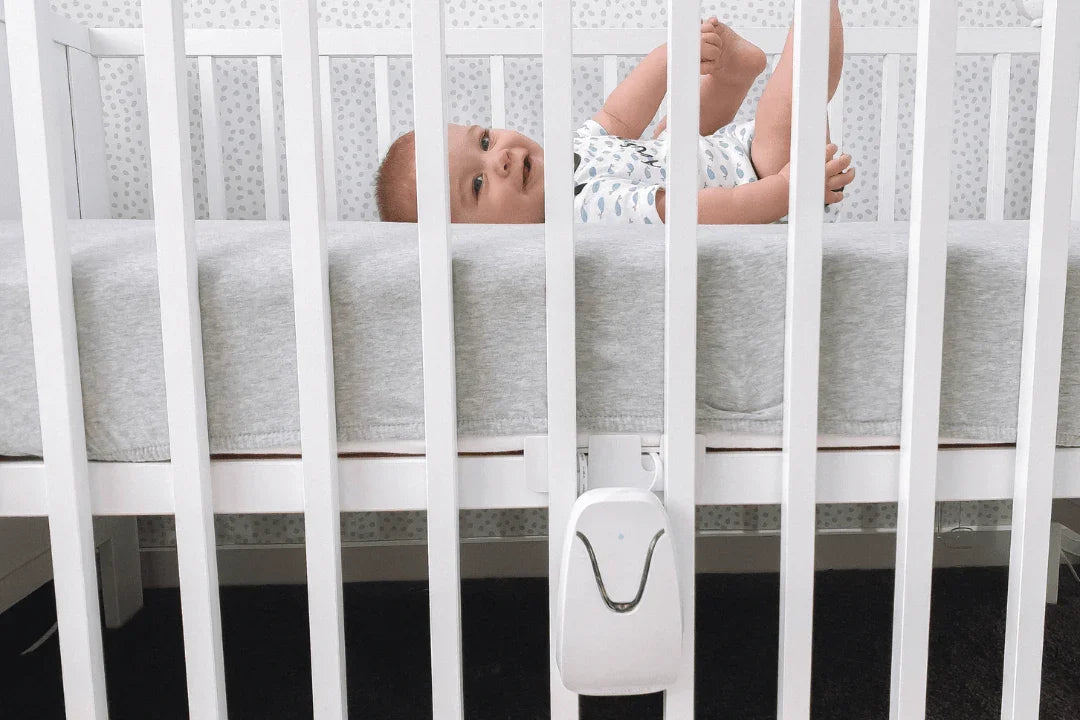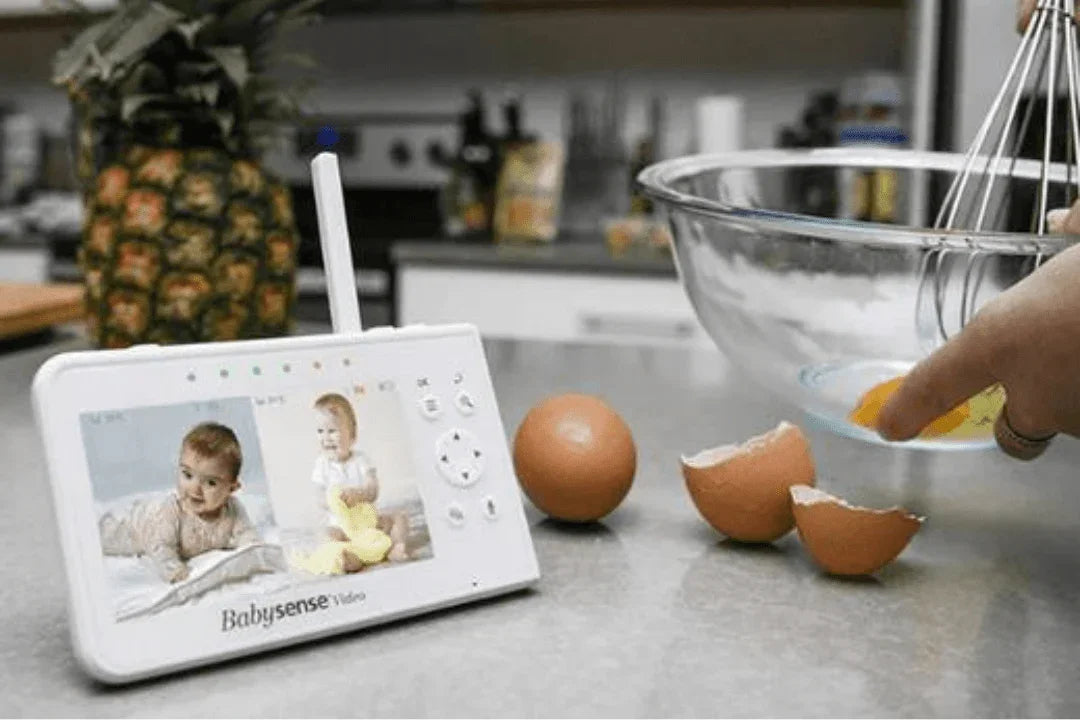Bringing a newborn home is joyous—and exhausting. Newborn sleep is fragmented and ever-changing, which can derail your own rest. Below, we outline what a normal newborn sleep schedule looks like and share practical steps (plus smart nursery tools) to help you reclaim more ZZZ’s.
Quick take: Newborns commonly sleep 14–17 hours across 24h in short stretches. Mimic your baby’s rhythm, build a gentle nightly ritual, room-share (not bed-share), and lean on helpful tech—like a secure split-screen monitor and a sound-and-light routine—to protect your rest.
What’s a Normal Sleep Schedule with a Newborn?
Every baby is unique, but the average newborn (0–3 months) sleeps 14–17 hours in 24 hours—usually in 2–3 hour stretches due to frequent feeds. Around 3+ months, many babies consolidate sleep into longer spans (some reach 5–6 hour stretches at night), though variability is common.
Your own circadian rhythm will get disrupted—new parents average ~5–6 hours of sleep in the early months. Consistency, small naps, and tools that reduce nighttime guesswork can meaningfully help.
Tips to Improve Your Sleep with a Newborn
1) Make sleep a top priority
Chores and messages can wait. A temporarily messy home is worth a little extra shut-eye while you recalibrate during the fourth trimester.
2) Keep a consistent feeding rhythm
Newborns typically feed every 2–3 hours. If yours stretches longer, wake to feed and aim for full, efficient feeds—full bellies often = longer sleep spans.
3) Follow a simple nighttime ritual
Bath → fresh diaper & pajamas → dim lights → brief cuddle or lullaby → into the crib drowsy. Pairing steady sound and low light reinforces the “it’s bedtime” cue set. See: sound & light routines.
4) Share a room, not a bed
Room-sharing helps with feeds and soothing while reducing risk. Avoid bed-sharing; follow AAP safe-sleep guidance and NIH Safe to Sleep®.
5) Ask for help & leverage tech
Trade shifts with a partner, nap when baby naps, and let visitors hold the baby while you sleep. Smart monitors and sound-and-light tools can act as extra “hands” so you’re not up unnecessarily.
How a Baby Monitor Helps You Build a Better Sleep Schedule
Peace of mind is priceless when you’re trying to rest. A secure video monitor lets you check without disrupting—so you can decide when to intervene and when to let baby settle. Split-screen, clear night vision, and two-way talk reduce middle-of-the-night guesswork.
Updated Product Picks (Babysense)
MaxView 5.5” 1080p Full HD Split-Screen Baby Monitor
Why it helps tired parents: True split-screen for two rooms/angles, crisp Full HD video, secure FHSS (no Wi-Fi required), long range, temperature display, two-way talk, lullabies/white noise, and reliable night vision—so you can stay in bed and still keep eyes (and ears) on baby.
Dreamer Smart Sound & Light Machine
Build consistent wind-down cues with white/pink/brown noise, lullabies, and a dimmable, multi-color night light, plus timers and routines. Gentle sound + low, warm light can reduce false alarms and help everyone fall back to sleep faster.
Contact-Free Baby Breathing Monitors
Added reassurance for the newborn phase. These sensors track subtle movements associated with breathing and can alert if patterns pause—use alongside safe-sleep practices for a calmer night.
Want an integrated approach? Explore the Babysense Smart Nursery for coordinating tools that keep routines consistent.
Safety & Evidence: Quick References
- Safe sleep basics: AAP • NIH Safe to Sleep® • CDC overview
- Circadian rhythm & new parents: Sleep Foundation • New parent sleep stats
- Sound safety: Keep machines on the lowest effective volume, several feet from the crib; see AAP study on infant sleep machines and NIH NIDCD.
FAQs
When will my baby start sleeping through the night?
Many babies begin consolidating night sleep between 4–6 months, but patterns vary. Focus on consistent routines and safe sleep. If you’re concerned about sleep or feeding, check in with your pediatrician.
How long should a newborn stay awake between naps?
Often 45–90 minutes in the first months (you’ll see sleepy cues like yawning or zoning out). Short wake windows + quick wind-downs help prevent overtiredness.
Is room-sharing recommended?
Yes—placing baby to sleep in the parents’ room, on a separate flat sleep surface, is recommended early on. Avoid bed-sharing. See the AAP guidance.
Do I need a Wi-Fi monitor?
Not necessarily. Local, encrypted FHSS monitors like MaxView avoid network outages and reduce hack-related worries, while still providing clear video, split-screen, and two-way talk.





